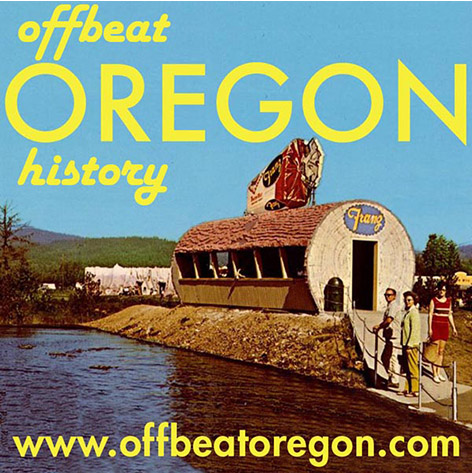WARM SPRINGS RESERVATION, JEFFERSON COUNTY; 1870s:
Dispute over Indians’
land lasted for 101 years
By Finn J.D. John
|

They promptly did, and so was launched one of the more outrageous legal farces of Oregon history. The court, in 1941, ruled that yes, the Indians were entitled to the land of the McQuinn Strip. However, the judge ruled that they could not simply have their property back; instead, they would have to accept payment for it. The proposal for payment was the best part, and by “best” I pretty much mean “worst.” The judge started off by decreeing that the stolen land would have been worth $1 an acre in 1871. (Land was actually selling for $5 to $15 an acre at that time, depending on how well-watered and productive it was. The McQuinn Strip would probably have landed somewhere in the middle of that range.) Therefore, the judge announced, the Indians were entitled to $80,925 plus interest, or $241,084. But, he added, the government had spent $252,089 “in behalf of the tribes” during that same period, so actually the Indians needed to hand over the land AND pay the government an extra $11,005. I haven’t been able to learn for sure whether the tribes took this as an insult, but surely they must have. Wouldn’t anyone? In any case, the tribes rejected the offer and continued to protest. But this really obvious show of bad faith on the court’s part seems to have raised the tribes’ profile in some important places. In 1943, Oregon Senator Charles McNary and Rep. Lowell Stockman introduced a bill that would have cut straight to the heart of the matter, simply revising the reservation boundary on the McQuinn line and letting the chips fall where they might. The Roosevelt Administration’s Department of Justice (J. Edgar Hoover and friends) and Department of Agriculture (home of the Forest Service, which controlled most of the land in the strip) lobbied against it, and it failed. But after the war, in 1948, Oregon Sen. Guy Cordon tried again — introducing a bill that rather than changing the boundary, simply required the government to give the tribes the gross revenues in grazing fees and timber sales from the disputed lands. This proposal passed relatively easily, probably because the government wasn’t getting very much revenue from it. That changed, though, as the years went by, and by 1970 the tribes had banked almost $6 million from the deal. This income stream helped the tribes build their legendary Ka-Nee-Ta Resort in the 1960s. But around the end of the 1960s, lawmakers started working behind the scenes to get all parties on board with a plan to give the land back for real. Rep. Al Ullman took the point on it, and by the time he was introducing the bill to give the land back, in late 1971, there was widespread agreement that it was high time to make things right. This seems to have been news to John McGuire, the chief of the Forest Service, though. In what seems to have been intended as a surprise move to kill the bill, late in the process McGuire suddenly announced that the Nixon Administration opposed the bill. He said the Forest Service wanted to spend two years on a study of all the borders of all the Indian reservations before considering signing off on adjusting this one. Was he playing for time? Was he hoping the Forest Service would pick up a few acres in the process? Whatever the motive, it made little difference, because a few weeks later Senators Mark Hatfield and Bob Packwood got an identical bill out of the Senate Interior Committee and by early August it had passed the Senate with ease. The following month, it passed in the House — literally unanimously. When the bill landed on President Nixon’s desk, he promptly signed it. Whether McGuire was right or not in saying his administration opposed it, it had passed by more than enough votes to be veto-proof, so Nixon didn’t waste any political capital opposing it. And that’s how, at long last, after 85 years of intransigent possession of stolen property, the U.S. government finally gave the Warm Springs Indians back their land. The tribes took possession of all the public lands, and announced that the owners of private lands in the McQuinn Strip would have their property rights respected as they always were, but that if they should ever want to sell, the tribes would make an offer.
|




